Hakonechloa is one of those plants that just catches your eye. I know because it is the plant I’m most frequently asked to identify in my garden whenever I post photos that include it. It’s also a plant I would hate to be without.
Hakonechloa (aka Japanese forest grass) has the distinction of being one of the few grasses that thrives in shade and that alone makes it a very useful plant. It’s also relatively low growing, so it does well at the front of the border or in large, flowing masses.
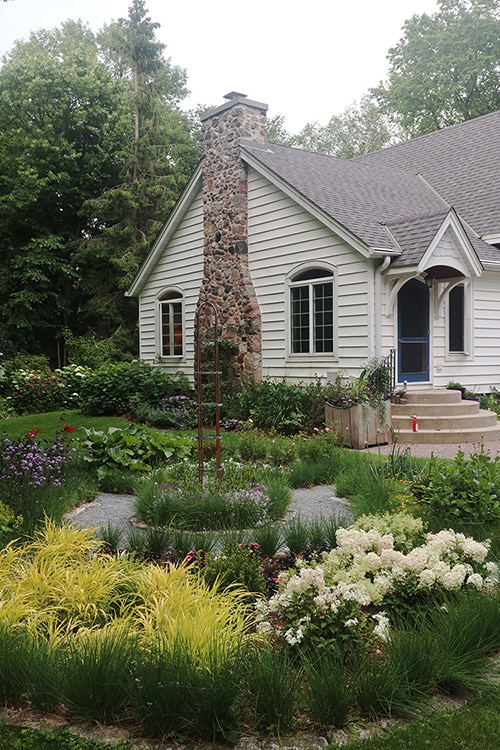
I find that it also fits in well with a variety of garden styles. Certainly it is well suited to Japanese-inspired gardens, but it works equally well in formal gardens (it looks great when planted with boxwood, which provides an excellent texture contrast), natural-style gardens where it’s flowing habit is particularly appreciated and even cottage gardens.
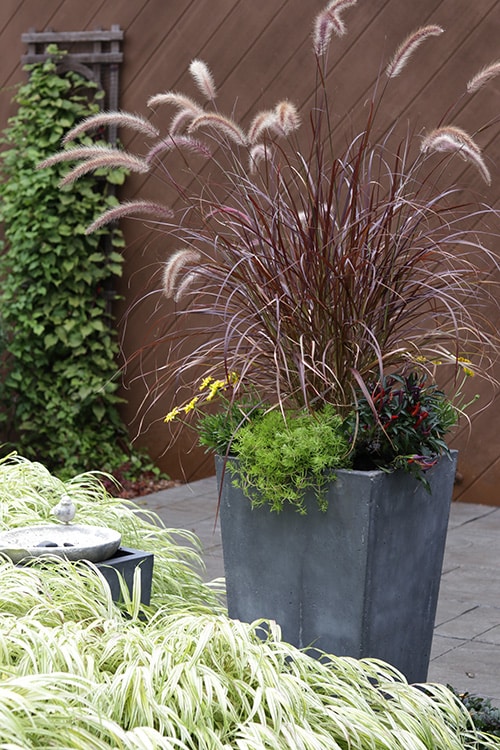
There are several cultivars. I was first introduced to ‘Aureola’, which is mostly yellow with a green stripe down the center of the leaves, and learned quickly that it does much better in shade. I had three growing in the same garden in full shade, part shade and not-quite-full sun and the healthiest was the full shade one. The one in a lot of sun ultimately failed after several years of getting smaller each year, although this may have been because of soil dryness rather than exposure. Hakonechloa likes a rich, moist soil where it can get it.
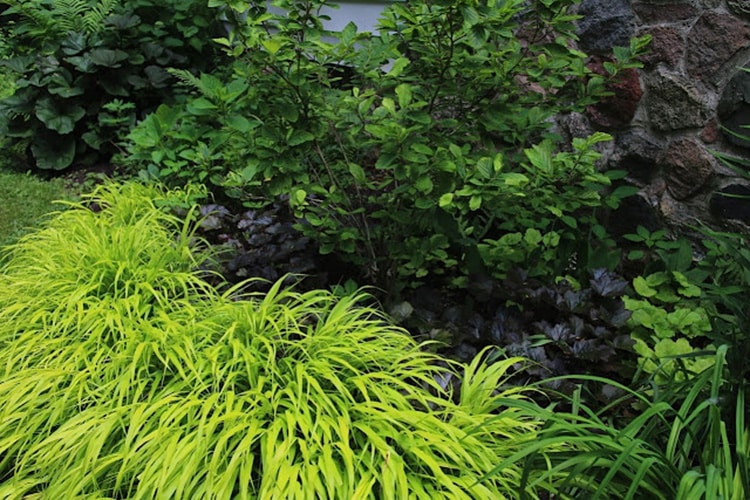
‘All Gold’ is my favorite of the cultivars I’ve tried. It is true to its name all yellow, although it tends more toward chartreuse in shadier conditions. I find that it can handle part sun, although the foliage can get quite washed out by the middle of summer if it’s in too much sun. It is lower growing than ‘Aureola’, about a foot tall or so, but fills in quickly. Several years ago I bought a dozen or so 3-inch liners, which filled in within three years and kept growing. I divided them in half for a new garden by the garage and three years later those divisions could use dividing. I moved the original plants to the circle garden last year.
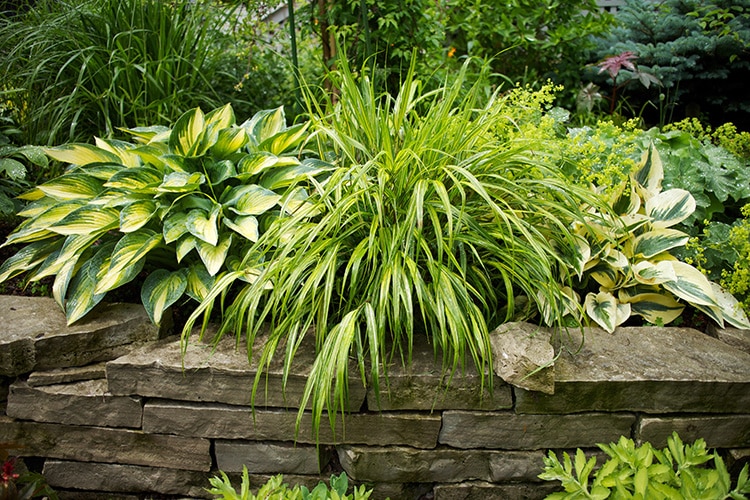
I also grow a cultivar called ‘Stripe it Rich’ which I acquired through a plant co-op and have never seen for sale since. It has far more stripes than ‘Aureola’ and is the largest of the three, growing to about 30 inches tall. I grow this one successfully in an east exposure, although I think it would appreciate a bit more shade than it is getting.
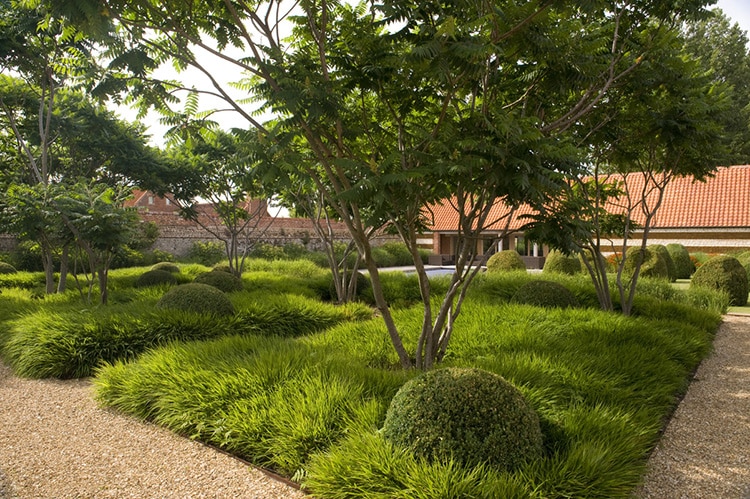
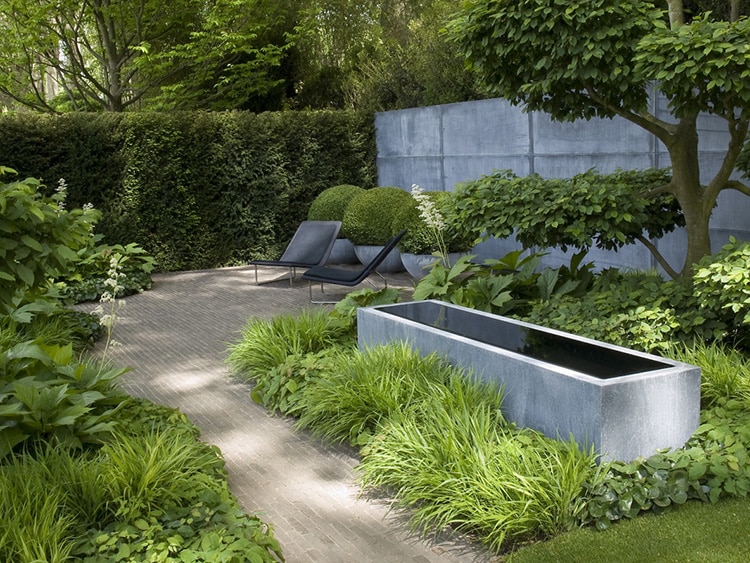
I’ve not grown the species Hakonechloa macra … yet. It’s a straight green but has the great flowing texture that is perhaps the plant’s best feature. In fact with all the showy cultivars, I hadn’t really given it much thought. But I’ve heard wonderful things about it, and British garden designer Tom Stuart Smith has created amazing gardens that feature it, which is enough to make me seek it out.
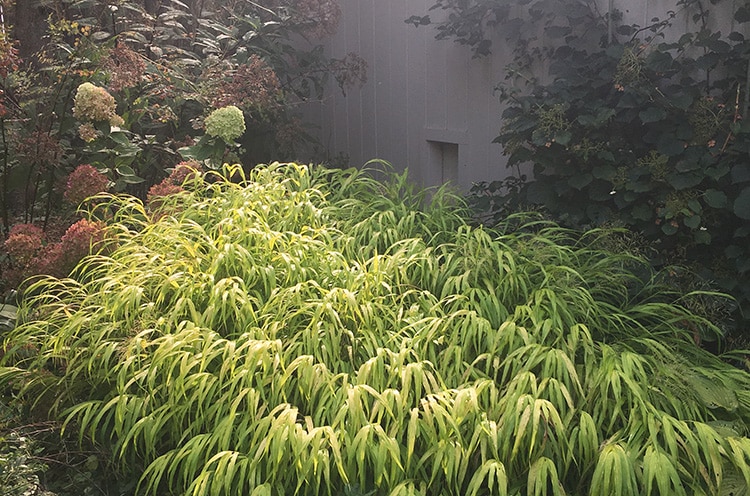
Like many grasses, it looks great left standing throughout winter, although I do give it a hack back as soon as it’s safe to get in the garden in spring. It is easily divided, but it’s best to do that when new growth is just peeking up. There is no other maintenance required.
The zone range varies depending on the cultivar, but most grow in zones 5 to 9. A few of the newer cultivars including a dramatic red-leafed one called ‘Beni Kaze’ seem to be more comfortable in zone 6 and up even if their tags say zone 5.
I think all of the Hakonechloas look best planted in large groups, the bigger the better, although they can also serve as an up-front focal point and foil for other textures in the garden if planted singly in a place of prominence.
Looking for other plants to know? Try these:
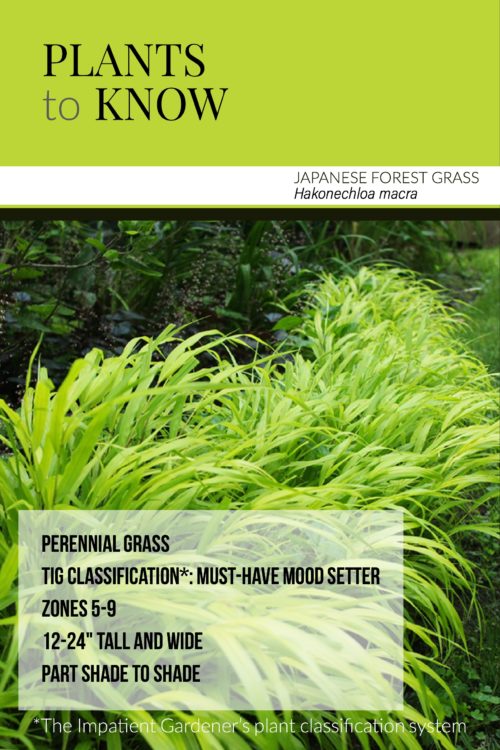


15 Responses
I’ve heard that you can’t grow auriola and all gold from seed but I frequently see them advertised. Is this correct?
Haven’t tried this in my sandy, Zone 4 garden, but I sure love seeing it in others. The yellow one adds such a contrast. Am tempted to see if I can push the Zone limit…
Give it a shot, Karen. The species (macra) is listed as zone 4 in a lot of places, and I’d say the ‘All Gold’ seems to be really bulletproof in my yard, which has been known to dip below the zone 5 range from time to time.
I have a rather dry shade garden under a large Cedar tree and wondered how this plant would do. I at present have Hellebores,Holly ferns and some perennial geranium planted in the area and lots of big containers of Hosta and Heuchera but would love to have more planted directly in the ground. This plant would add some needed color. Think it would handle dry shade?
Honestly I don’t think it would do well. It would handle the shade just fine, but the dryness would be problematic. There aren’t a lot of plants that are happy there, but I do grow Geranium macrorrhizum in that exact location and it manages fine. It’s not as bright as Hakonechloa, but it’s something!
you could try trachystemon orientalis large leafed member of borage family . edible. looks great under trees.
I love my stand of macra which right now is still standing 3 feet tall. Also, it seems to be less appealing to the rabbit population than the spring growth of Aureola. Mr Stripey looks similar to a variety named ‘Stripe it Rich’.
Oh my goodness, Jan. Thank you for leaving this comment! ‘Stripe it Rich’ is the right name! I’m not sure what I was thinking (maybe I had Mr. Stripey tomato on my mind!) I’m going to go correct this error now. Thanks for saying that. Also I’m thrilled to hear the rabbits aren’t fans of your macro.
I love Mr Stripey! If I moved from this garden and could do one more garden, it would be that one of Tom’s with the green grass, shrubs and and sumacs. It is so stunning. I put the grren grass and yews in my former moss garden but not much to see yet.
I bet that combo will look great this year … probably just needs some time to settle in. You were the one who drew my attention to macra. the only place I’ve seen it is the Flower Factory, so a proper trip there is in order this year.
If you go to FF let me know. I can meet you there or you can also come to my house.
Definitely!
I have never had luck with this plant. I think it is too hot and dry here. I have even tried it around the water feature that I clean and keep filled daily during summer. Wouldn’t you know this is one plant I adore and yet can’t grow. Sigh~~
Where are you Lisa? I’m in Florida zone 9a and am worried that it won’t do well in humidity and heat. But yes, its one I’ve always wanted to grow too!
Isn’t that always the way it is? A plant you really want to grow that just doesn’t want to grow where you are. Argh.
I do think the dryness is problematic for it.